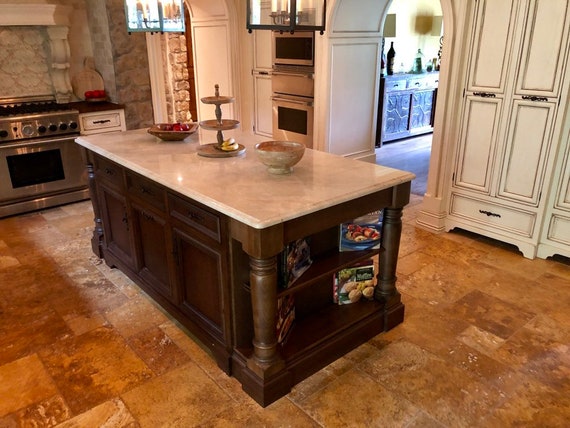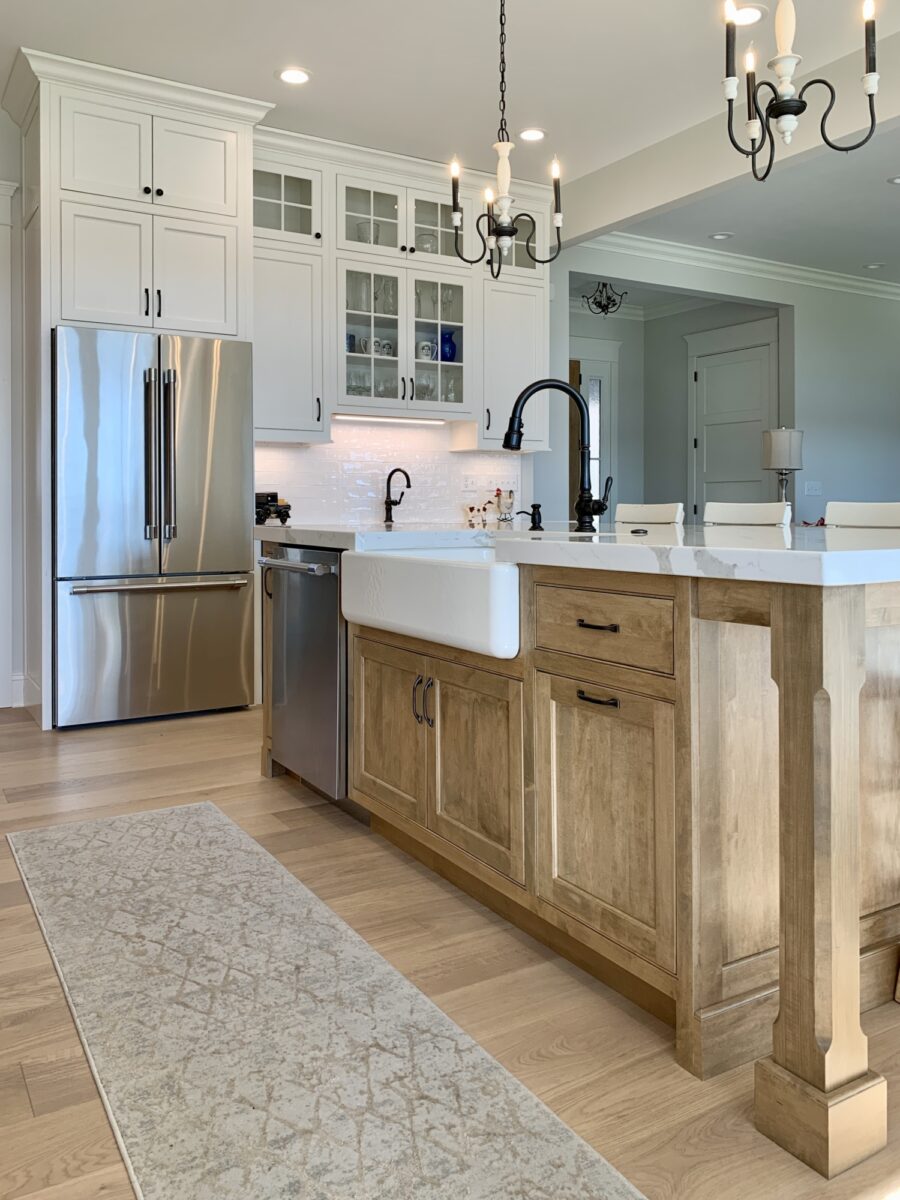Kitchen Island Legs: Enhance Your Kitchen with Solid Assistance
Kitchen Island Legs: Enhance Your Kitchen with Solid Assistance
Blog Article
An Overview to Selecting the Suitable Kitchen Area Island for Your Home
Selecting the ideal cooking area island is a multi-faceted decision that can dramatically affect both the performance and appearances of your home. Comprehending your kitchen's spatial characteristics is the initial action, making sure that the island fits perfectly without disrupting the circulation. Beyond room considerations, identifying the key function of the island-- be it for meal preparation, eating, or extra storage space-- is vital. The option of finishes and materials additionally plays a crucial role in integrating the island with your kitchen's general layout. As we explore these aspects further, the subtleties of each decision will certainly end up being clear.
Assessing Your Space
Prior to picking a kitchen island, it is important to extensively evaluate your room to ensure the addition will certainly be both useful and visually pleasing. Begin by determining the readily available area, including the size, length, and height of the kitchen area. Exact measurements are crucial to prevent buying an island that overwhelms the room or one that is disproportionately tiny.
Consider the existing layout and just how the island will certainly incorporate with the current traffic circulation. A well-placed island must not block pathways or impede access to important home appliances, such as the sink, fridge, and range. Leave ample clearance room-- commonly around 36 to 48 inches on all sides-- to allow for comfy movement and workspace efficiency.
Following, review the all-natural light and sightlines within your kitchen. An island that blocks a window or disrupts visual communication can make the room feel dark and confined. Consider how the island's placement will influence lights and presence, guaranteeing it improves as opposed to diminishes the kitchen area's atmosphere.
Identifying the Purpose
Figuring out the purpose of your kitchen area island is a vital action in ensuring it fulfills your particular demands and choices. Before diving right into style or size factors to consider, it is necessary to clarify what primary feature the island will certainly serve in your cooking area. Will it be a main center for dish prep work, a laid-back dining location, or possibly an added storage space solution?
For those that enjoy food preparation, incorporating home appliances such as a cooktop or sink may be needed. Furthermore, sufficient counter space for mixing and slicing, in addition to available storage space for cooking area tools and components, can transform the island right into an efficient workstation. On the other hand, if the island is planned to offer or help with social communications as a dining location, seating plans become paramount. In this situation, making certain enough legroom and surface for comfy eating experiences is important.

Picking the Right Dimension
Picking the right dimension for your kitchen area island is a balance of capability and area optimization. An ideal kitchen area island must supply sufficient office while making certain that movement around the cooking area continues to be unimpeded. Begin by determining your kitchen area room; a minimal clearance of 36 to 42 inches around the island is essential to permit comfortable activity and availability.
The dimensions of the island need to reflect its designated use. If the island will certainly offer mainly as a prep area, a width of 24 to 36 inches could be sufficient.

Lastly, guarantee that the island's size enhances the total kitchen area format, avoiding any type of frustrating existence that may diminish the kitchen's aesthetic and utility - kitchen island legs. Mindful planning and precise dimensions will certainly assist you accomplish a efficient and unified kitchen environment
Deciding On Products and Finishes
After establishing the ideal dimension for your cooking area island, the following step includes picking appropriate products and surfaces. The option of materials significantly influences both the visual allure and capability of your kitchen island. Popular materials for kitchen counters consist of butcher, granite, and quartz block, each offering unique advantages. Granite, understood for its sturdiness and timeless elegance, is extremely resistant to scrapes and warmth. Quartz, an engineered stone, gives a non-porous surface that withstands discolorations and germs. Butcher block, made from hardwood, includes a warm, rustic beauty and is suitable for cooking.
Along with the countertop, take into consideration the products for the island base. Solid timber provides a traditional, sturdy look, while stainless-steel provides a smooth, modern-day appearance and is very easy to clean. Painted surfaces can present a dash of color, with choices varying from low-key pastels to bold, dynamic shades.
When picking finishes, guarantee they complement the total cooking area layout. Matte surfaces offer a modern feeling, while shiny surfaces can produce a sleek, high-end appearance. Pay interest to the toughness of finishes, particularly in high-traffic locations, to maintain the island's appearance in time. Selecting the best materials and surfaces will boost both the performance and visual appeal of your kitchen area island.
Incorporating Practical Attributes
Incorporating practical attributes right into your cooking area island can dramatically enhance its energy and ease, changing it right into a flexible centerpiece of your kitchen area. One necessary feature to take into consideration is additional storage. Incorporating cabinets, drawers, and open shelving can provide much-needed area for kitchenware, tools, and little devices, aiding visit the site to maintain a clutter-free atmosphere.
An additional important enhancement is an integrated sink or cooktop, which can enhance meal preparation and clean-up processes. A sink can promote tasks such as washing vegetables and cleaning recipes, while a cooktop can allow for food preparation directly on the island, cultivating a much more interactive and social food preparation experience.
Think about including seating alternatives, specifically if your kitchen functions as an informal eating location. Bar stools or integrated benches can change the island right into a multifunctional space for meals, research, or informal events.
Finally, incorporating electrical outlets right into your kitchen island can improve its usefulness. Outlets offer practical accessibility for tiny kitchen appliances, billing terminals for electronic tools, and additional lighting options.
Final Thought

Before selecting a cooking area island, try here it is crucial to thoroughly examine your space to ensure the addition will certainly be both useful and visually pleasing.Choosing the best size for your kitchen island is a balance of performance and area optimization. kitchen island legs. An ideal kitchen island must give ample work space while making sure that movement around the cooking area remains unimpeded.Integrating useful functions right into your kitchen area island can significantly improve its energy and convenience, hop over to here changing it right into a flexible focal point of your kitchen area.In final thought, selecting the suitable cooking area island demands a thorough assessment of the readily available room, clearness regarding its main feature, and cautious consideration of the proper size and materials
Report this page